Semantics refers to the meaning level of
language. It is usually thought of as sitting "above" the
syntactic level, and just "below" the level of non-linguistic
cognition. Before discussing semantic structure, let's look at
the traditional way of
diagramming sentence syntax. Here are the syntactical "trees" of
a few simple
sentences:
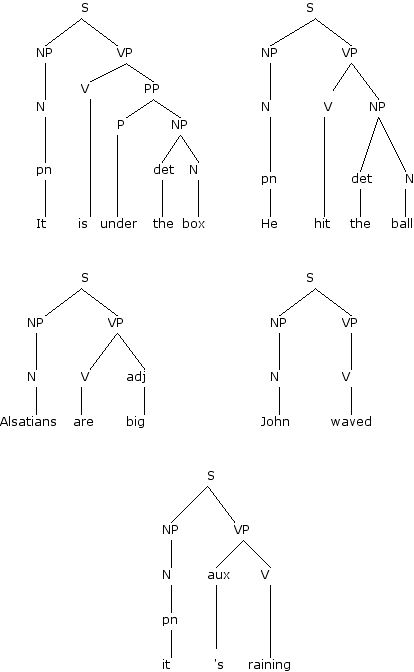
S stands for sentence, NP for noun
phrase, VP for verb phrase, N for noun, V for verb, pn for pronoun, det
for determinative (e.g. "the"), adj for adjective, and aux for
auxiliary.
Linguists also have a few ways of
diagramming the semantics or meaning relationships of a sentence.
Here are the semantic "trees" of those same sentences:
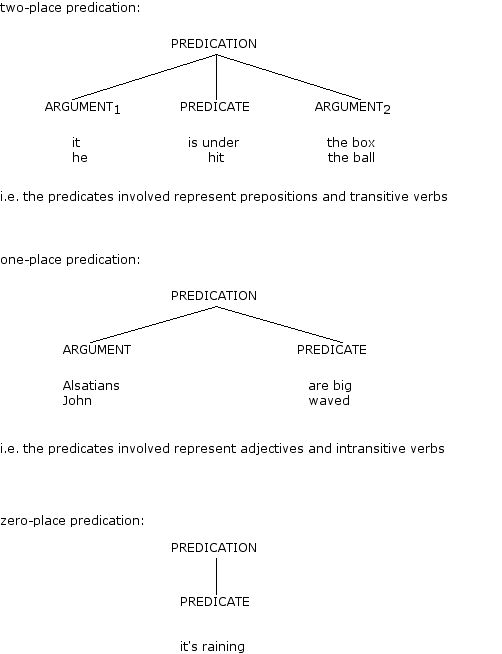
Notice that arguments and predicates are
"broader" than things like nouns and verbs. They point at entire
meaningful objects and events.
Chomsky and others introduced the idea
of surface and deep structures in syntax. This is also considered
in semantics. The big difference between the surface semantics
style of diagram and those used to diagram the deep structure of
semantics is that the deep version is less linear. In this way,
they are further from the linear nature of spoken language and closer
to the non-linear nature of cognition. Here are those same sentences
diagrammed in a way that shows their
"deep"
semantic structures:
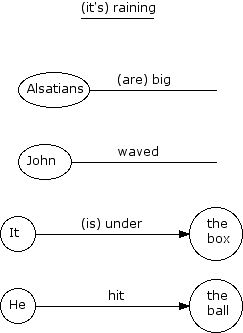
Notice that the arguments are in the
circles, and the predicates are indicated by lines, some with
arrows. Notice also that adjectives are treated the same way as
intransitive verbs, and prepositional phrases are treated the same way
as transitive verbs. Determinatives, plurality, tense, auxiliaries,
etc., are treated as part of the argument or predicate they refer to.
Here you can look at all three
diagrammatic representations
at once:
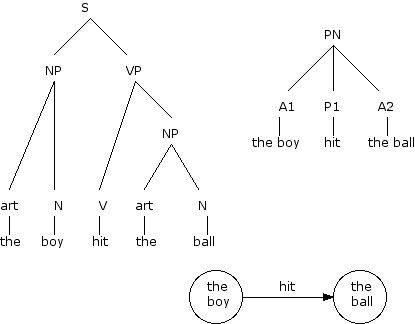
This is an example of a qualifying
predication, as represented on the
syntactic
level by a prepositional phrase:
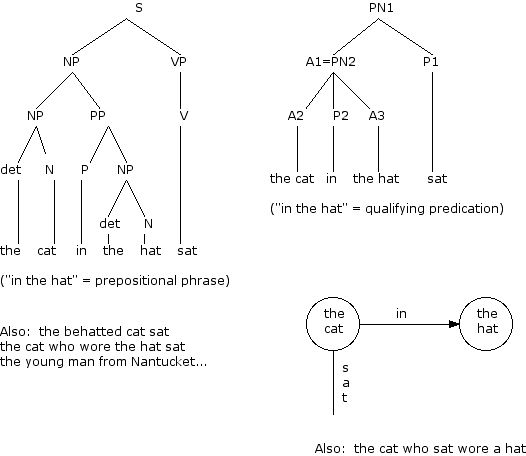
Here is a sentence with a qualifying
predication represented by a
relative
clause:
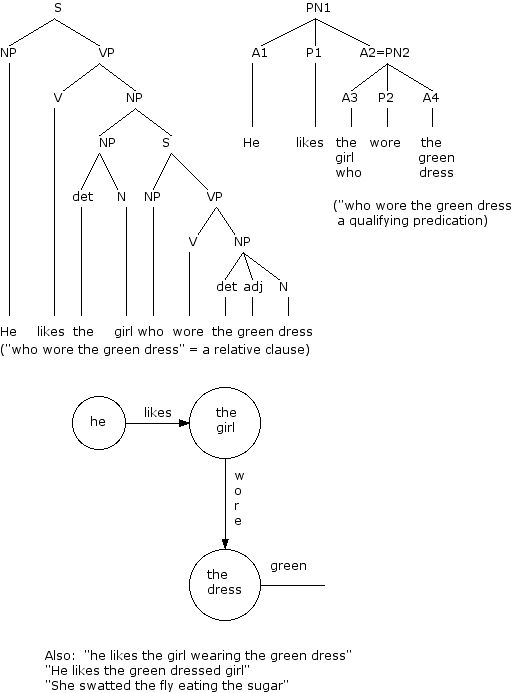
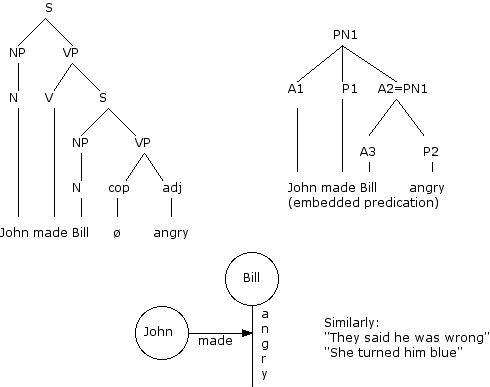
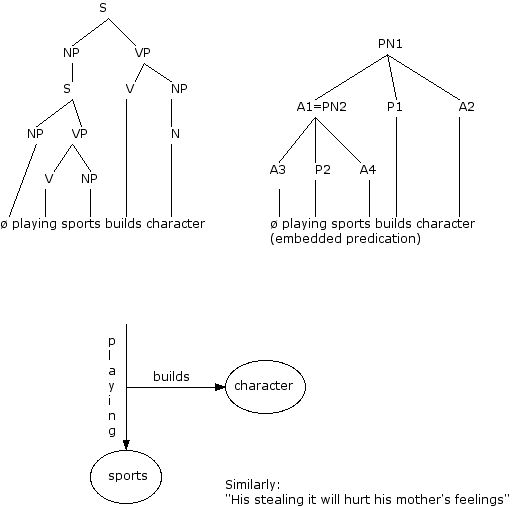
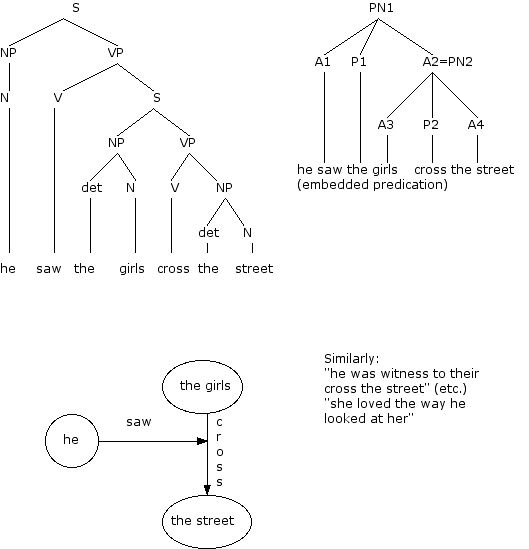
Finally, several examples of more
complex or just plain odd sentences:
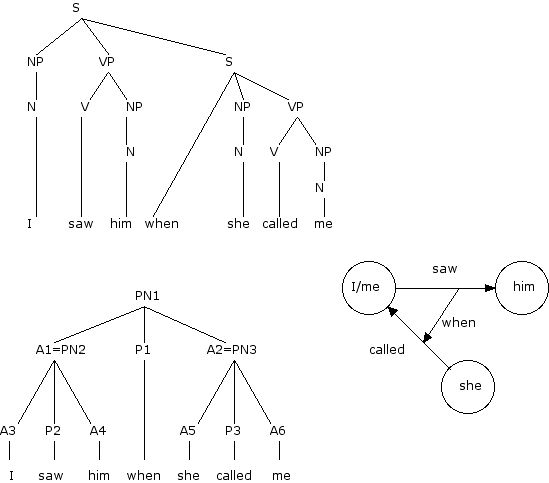
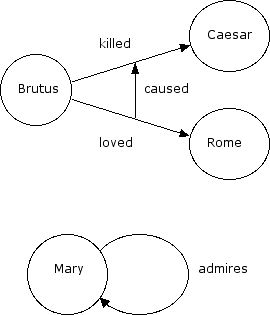
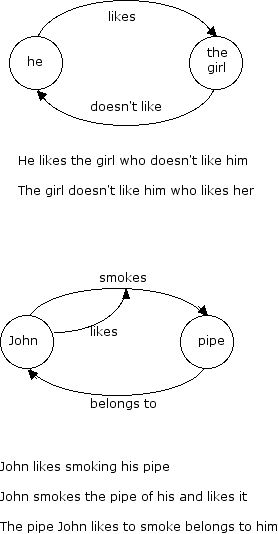
Examples are from Geoffrey Leech's Semantics (Penguin, 1974)
